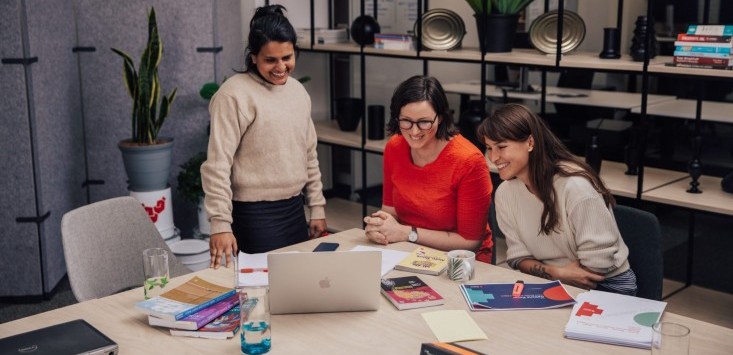
Source: That Startup Photo Library.
The government pledging to build an economy for women, and a number of new female MPs on the crossbench, provides us with a positive glimpse of a more fair and diverse workforce in Australia. But while recent announcements of childcare subsidies and a host of other initiatives that will help get more women into the workforce is certainly encouraging, we’ve still got a long way to go in providing female leaders and entrepreneurs in Australia with opportunities to unlock their full potential.
The startup ecosystem in Australia is one example. While it continues to grow, businesses founded by women are still underrepresented. In 2021, only 5% of capital went to startups with all-women founding teams.
In order to improve gender parity and create a fairer and more thriving startup ecosystem in Australia, we need to look at how we can create a pathway for more women to become founders of tomorrow’s companies, today.
Equitable pitching
While the startup ecosystem is certainly making progress toward facilitating a pitching process that is more equitable for women, there’s a lot more that needs to be done on this front.
First, it’s important to engage at very early stages with potential founders, especially when they’re still in research roles, by offering mentorship and holding office hours to provide advice to women who are exploring starting their own ventures.
Empowering future leaders
To create a more equitable startup ecosystem in Australia, VC firms should consider working with female leaders to provide them with hands-on experience at startups across their portfolio. At Main Sequence, we’ve recently trialled a model where we identify emerging talent and place them in senior roles, helping them develop the skills needed to potentially become founders down the line.
We have also observed something especially unique about female founders and leaders within the startup ecosystem — they serve as magnets that can attract talented women. When looking at our own portfolio, we’ve noticed that the teams that are led by women tend to be beautifully diverse. Not just in gender or ethnicity, but also in background, culturally and socioeconomically. We need to look at how we can help create a pathway for women to get hands-on experience and become founders of the next generation.
Early intervention
Venture capital firms should seek to identify whether there are diversity issues within a company at the time of investment, then bake in improvements as a condition of their investment before working with the company to address these gaps. It’s critical that the investment criteria takes into account diversity and inclusion when evaluating potential companies to back. At the same time, firms can take steps to begin looking inwards by looking at their own talent pipeline and figuring out how to address any gaps in female applicants.
There isn’t one single step we can take to build a fairer and more diverse startup ecosystem. We must instead look at this holistically. We can all do our part in committing to building a better economy for diverse talent, because it’s clear that it will play a huge role in creating the next generation of valuable companies and further contribute to unlocking the country’s economic potential.



COMMENTS
SmartCompany is committed to hosting lively discussions. Help us keep the conversation useful, interesting and welcoming. We aim to publish comments quickly in the interest of promoting robust conversation, but we’re a small team and we deploy filters to protect against legal risk. Occasionally your comment may be held up while it is being reviewed, but we’re working as fast as we can to keep the conversation rolling.
The SmartCompany comment section is members-only content. Please subscribe to leave a comment.
The SmartCompany comment section is members-only content. Please login to leave a comment.